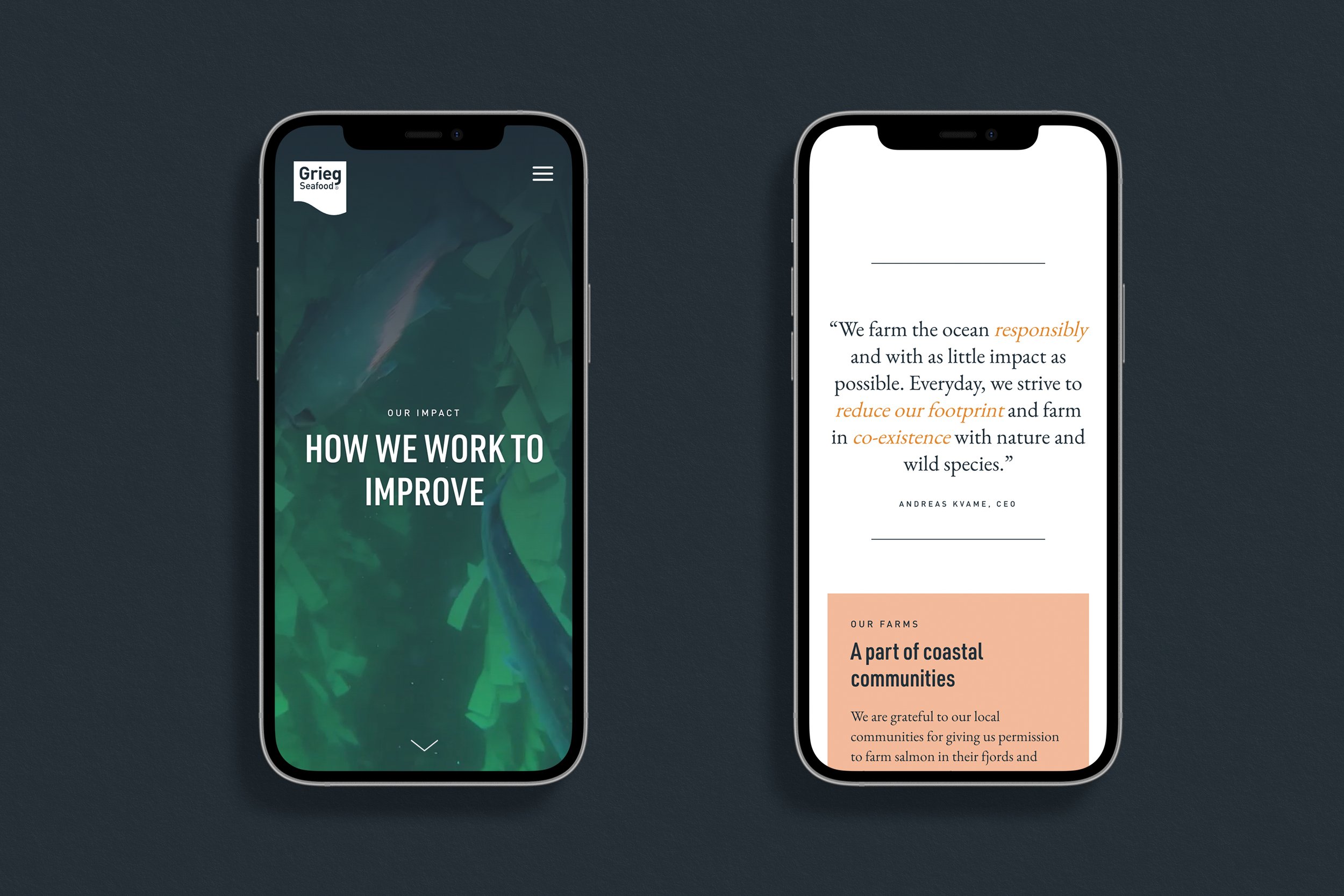All brands live their own digital lives, and it is easy to fall in love with all the possibilities the digital universe offers, and thus lose focus. At the same time, most of the information, dialogue and services have moved into the digital universe, and it has become a challenge to be clear, easy to understand and relevant to different target groups.
Equally great on all surfaces
Consistency across platforms is a key success factor for digital branding, as is simplicity and ease of use. Our approach is characterized by this, because we so often experience the opposite.
A digitized world requires a brand that works equally well on all surfaces. Based on user needs, we connect the brand across web, mobile and social media to create a complete brand experience.
"Such a long and good collaboration has led us to experience that Mission is better at putting our daily challenges into words than ourselves."
Andreas Madshus
Owner/Daily manager - Expo Nova (2021)
Do you have a digital presence that gives you the attention you deserve?
Customer benefits
A consistent brand expression across channels.
User-oriented digital solutions.
How long does it take
Experience has shown that the implementation of a complete process takes from 4-6 months. In a start-up meeting, we agree on dates for important milestones and together define which resources are required internally with regard to anchoring and decision-making.
Our process
① Digital audit
We start with a start-up meeting to understand the situation and the desired result, define the task and identify the need for further insight. We will normally conduct a digital audit, an analysis of current digital surfaces. A digital audit reveals important needs that provide a basis for preparing a requirements specification. It may also be relevant to carry out user tests, competitor analyzes, interviews with stakeholders, etc.
Based on findings from the analyzes, a workshop is conducted where the goal is to agree on a strategic framework and requirements specification.
Digital audit that may include:
SEO analytics
Infrastructure analysis
Inspection code
Analytics review
Site performance
UX Design
Workshop / Requirements specification:
Goals for the project
Target group and user needs
Content and functionality
Choice of CMS and technical solution
Page structure (sitemap)
② Design
In this phase, we visualize the results from the insight, and develop designs based on the requirements specification. We use prototyping to give a realistic picture of how the solution will be perceived early in the process. We recommend performing user testing to make the further work as efficient as possible.
Design development:
Final page structure (Sitemap)
Customer Journey (Flowchart)
Wireframes
User experience (UX)
User interface (UI)
User testing in prototype
③ Development
In parallel with the design development, we will enter into a dialogue with developers. The selected CMS, requirements specification and prototype provide guidelines for the development work. We complete designs and specifications for all surfaces (responsive design) and work closely with developers to optimize the solution.
Once the CMS is programmed, both technical and user-controlled testing will be performed to troubleshoot and complete the work.
Completion of all templates and modules
Setup of CMS
Development of backend and frontend solution
User testing
④ Publishing
When the CMS is ready, the work starts with content production, training of employees, preparation of routines and distribution of responsibilities. Together with the client, we define tasks and division of responsibilities. We have good experience of engaging the working group in a workshop to share knowledge and secure ownership
Before publishing, we carry out technical preparations and prepare both ourselves and Google for launch.
Go live ->
Migration of current content
Development and implementation of new content
Training of employees
Workshop with employees:
How to engage the target audiences
How to create traffic
How to ensure that we are perceived as relevant over time
Preparation for publication
Evaluation meeting 4-6 weeks after launch







